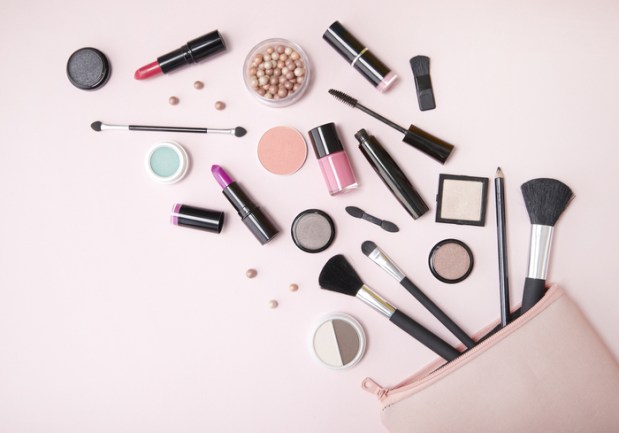28 Percent Of Consumers Cite Coupons As Most Important Beauty Merchant Feature

When Sephora announced the launch of a new 2,000-square-foot concept store in Boston last year, it unveiled a marriage of brick-and-mortar and digital: The store allowed customers the ability to order products in-store from the Sephora website, and it announced same-day pickup through its Sephora app, too.
However, not all health and beauty retailers are taking advantage of omnicommerce channels and features: Health and beauty stores scored a 36.5 average satisfaction score for omnichannel retailers in the PYMNTS Omni Usage Index.
Even so, some beauty retailers are rolling out all sorts of omnichannel features, from store pickups to mobile apps. Here are the omni features that matter most to health and beauty consumers, and how leading health and beauty retailers like Sephora and Walgreens are taking on omnichannel commerce.
Twenty-eight percent of consumers valued coupons most when shopping at health and beauty retailers. Some of those coupons are going digital: CVS President Helena Foulkes announced the launch of digital receipts in 2016, which the company says would allow its ExtraCare Rewards program members to collect receipts in their email. CVS ExtraCare members would have the option to go paper-free for in-store purchases by registering their email address at the point of sale (POS) — a one-time process, it was reported at the time. New customers and non-members would also have the choice to enroll in the rewards program and register their email address at the POS. Upon registration, customers would begin to get receipts delivered in their inbox, in addition to coupons and rewards. The addition of coupons and rewards to the receipt often made it so long that it became a public favorite of internet humor.
Sixteen percent of consumers valued rewards most when shopping at health and beauty retailers. Walgreens, for example, introduced Beauty Enthusiast, a club to earn reward points on health and beauty products for its Balance Rewards loyalty members. Members of Beauty Enthusiast are to receive 5,000 in Balance Rewards points for every $50 spent on health and beauty products at Walgreens stores. In addition to earning loyalty reward points, Beauty Enthusiast members were eligible to receive free samples, coupons on health and beauty products, exclusive promotions, new product information and a one-time digital coupon once they enroll, which would offer them 20 times the reward points on their first beauty item purchase after joining Beauty Enthusiast.
Eight percent of consumers valued free shipping most when shopping at health and beauty retailers. Through Brandless’ B.More rewards program, for example, customers get free shipping on orders above $48 (for a $36-a-year buy-in), while non-members pay a $5 shipping free. The goods themselves are inexpensive and are meant to align with the emerging trend among consumers who have an increasing interest in spending less on private label goods. Millennials are less brand-loyal than their parents (though they tend to like quality), which means retailers like Brandless, that let them tap and access those preferences, have discovered a market looking for attention.
Two percent of consumers valued store pickup most when shopping at health and beauty retailers. Among digital developments for CVS is CVS Curbside, its online order/in-store pickup program. “Pharmacy is the heart of our business, and our focus on providing care to patients and customers defines everything we do in our stores,” Foulkes said. “Our new retail offerings leverage our deep expertise in health to enhance our customers’ shopping experience.” CVS will roll out major changes to some 70 new and existing stores in 2017, with plans to expand to several hundred more in 2018.
Two percent of consumers valued mobile apps most when shopping at health and beauty retailers. Sephora’s augmented reality (AR) mobile device app, for example, lets users give themselves a virtual makeover using thousands of shades of eye shadow (introduced earlier this spring), assorted lip colors and false eyelash styles. The digital makeover includes cheek color, from blush and bronzer to contour and highlighter shades, that are sold individually and in palettes. This news makes it easier than ever for shoppers to find what they want — and now without even setting foot in a brick-and-mortar store to test swatches on the side of their hand. Bridget Dolan, VP of innovation at Sephora said, “With these additions, Sephora Virtual Artist continues to put the power and expertise of Sephora quite literally in the palm of our clients’ hands. Since launching Sephora Virtual Artist in 2016, our clients have virtually tried on hundreds of millions of shade combinations.”
When it comes to Sephora’s new store, the concept was meant to bring together a neighborhood retail store environment with digital tools. However, the store didn’t forget the human touch of beauty advisors, who could provide personalized recommendations.
Calvin McDonald, president and CEO of Sephora Americas, said last year, “In today’s retail environment, where very little is constant and clients’ expectations are ever-evolving, one thing has remained true for Sephora: There is no better way to create meaningful connections with clients than through personalized experiences and a customized approach to beauty.”
